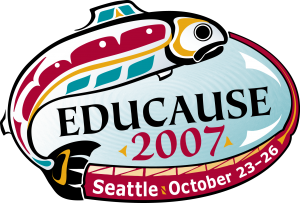Michelin’s Experts versus My Restaurant Preferences: Should, Say, or Do?
 Robert Benchley’s core premise, in his funny but oh-so-true article “How To Get Things Done“, is that being productive requires deceiving oneself about priorities. My premise today, closely related, is that what we say isn’t what we should say, and that what we actually do isn’t either of those.
Robert Benchley’s core premise, in his funny but oh-so-true article “How To Get Things Done“, is that being productive requires deceiving oneself about priorities. My premise today, closely related, is that what we say isn’t what we should say, and that what we actually do isn’t either of those.
That’s obviously an issue in higher-education information technology, my usual focus, but today I’m writing about Chicago restaurants, and specifically about discrepancies among expertise, preferences, and behavior. Such discrepancies are clearly important in higher-education IT practice. The reader will have to deduce that relevance since I’m going to stick to the matter at hand and hope I finish before I get hungry.
Chicago’s a great restaurant town, no matter whether one is interested in the latest molecular gastronomy, regional cheeses and salume, appropriate garnishes for hot dogs or Italian beefs, or nuanced differences among the seven moles of Oaxaca. So it was wholly appropriate that Michelin would choose Chicago to be its third American Red Guide city. Following a year’s worth of visits, Michelin critics awarded stars to 23 restaurants, and Bib Gourmand recognition to an additional 46. Presumably, since they’re chosen by the experts, Michelin-rated restaurants are where one should prefer to eat.
 Years ago I needed a nested list of something to teach myself how to use <li> tags in hand-coded Web pages. I arbitrarily chose to draft a list of restaurants where I’d eaten and might eat again, and over time that list has grown steadily. When I became a Quicken addict, as a byproduct of record-keeping I began tracking how frequently we ate at various restaurants.
Years ago I needed a nested list of something to teach myself how to use <li> tags in hand-coded Web pages. I arbitrarily chose to draft a list of restaurants where I’d eaten and might eat again, and over time that list has grown steadily. When I became a Quicken addict, as a byproduct of record-keeping I began tracking how frequently we ate at various restaurants.
Since we’ve lived in Chicago for almost fourteen years (and still spend most of our time there), we’ve developed preferences that guide both what we recommend to visitors and presumably guide where we actually eat. So I have data on where we should eat (that’s the Michelin ratings) and where we do eat (my Quicken data), and since our recommendations to friends over the years have been pretty consistent, I can also say what our preferences are.
I thought it might be interesting to compare those. I’m curious what one might deduce about why restaurant-choice behavior differs from stated preferences, and why personal preferences differ from those of experts. I munged together a list of restaurants comprising the union of
- the Michelin starred and Bib Gourmand lists and
- Quicken data on where we’d dined (arbitrarily defined as an expense of at least $20) at least once in 2008-2010.
Without looking at frequencies, I then rated the restaurants we’ve ever dined at based on how we characterize them to others. I reduced the ratings to five categories: Not Rated (which usually means I don’t remember the place), Okay, Good, Favorite, and Event.
There are 172 restaurants on the combined list. Of those,
- Michelin awards 69 at least one star or a Bib Gourmand rating,
- we dined at least once in 2008-2010 at 103 restaurants that remain open,
- 9 places we dined have closed (none of those is on the Michelin list), and
- we rate 105 of them Okay or better (we rate more places than we dined at because we have opinions about places we haven’t visited since 2007).
First, let’s look at should versus say.
- There were 26 restaurants that both Michelin rated Bib Gourmand or Starred and we rated Good, Favorite, or Event.
- Our Event restaurants (definition: places definitely worth going to once, or if someone else is paying) all received stars from Michelin.
- However, four of their one-star restaurants we rated merely Good.
- Conversely, of our 13 Favorite restaurants in the jointly-rated set, Michelin awarded one star to 5 and Bib Gourmand to 8.
- If we expand the set to include restaurants Michelin didn’t rate and our Okay ratings — that’s a total of 105 restaurants — we learn that Michelin didn’t rate 9 of our Favorite restaurants, and we thought 3 of their Bib Gourmand restaurants were merely Okay.
It’s interesting to look at the discrepancies.
 Our 9 Favorites not rated by Michelin are Avec, Café des Architectes, Coco Pazzo Café, Gioco, La Sardine, mk, Pelago, Rosebud Steakhouse, and Shaw’s Crab House. Three of the Favorites omissions from Michelin’s list are curious: Avec, Café des Architectes, and mk are clearly good as or better than many restaurants Michelin rated. The same is true of Pelago, but it may be too new for the Michelin people to have rated it. Some of the others make our list and not Michelin’s because part of their appeal to us is location (that is, they’re near where we live: Coco Pazzo Café, Pelago, and Rosebud Steakhouse), and Michelin does not include that in its judging. And some we find to be consistently good for the money or to be especially welcoming places, which are judgment calls.
Our 9 Favorites not rated by Michelin are Avec, Café des Architectes, Coco Pazzo Café, Gioco, La Sardine, mk, Pelago, Rosebud Steakhouse, and Shaw’s Crab House. Three of the Favorites omissions from Michelin’s list are curious: Avec, Café des Architectes, and mk are clearly good as or better than many restaurants Michelin rated. The same is true of Pelago, but it may be too new for the Michelin people to have rated it. Some of the others make our list and not Michelin’s because part of their appeal to us is location (that is, they’re near where we live: Coco Pazzo Café, Pelago, and Rosebud Steakhouse), and Michelin does not include that in its judging. And some we find to be consistently good for the money or to be especially welcoming places, which are judgment calls.
![]() Conversely, we rated 4 of Michelin’s one-star restaurants Good, and 3 of their Bib Gourmand places merely Okay. The 4 in that first group are Naha, NoMI, Spiaggia (one of Barack and Michelle Obama’s favorites), and Takashi, and in each case it’s because what we ate, although fine, didn’t live up to billing or price. The 3 in the second group are Bistro 110, Green Zebra, and The Purple Pig, the first of which just hasn’t impressed us that much, and the latter two of which we found disappointing especially given the hype that attaches to them.
Conversely, we rated 4 of Michelin’s one-star restaurants Good, and 3 of their Bib Gourmand places merely Okay. The 4 in that first group are Naha, NoMI, Spiaggia (one of Barack and Michelle Obama’s favorites), and Takashi, and in each case it’s because what we ate, although fine, didn’t live up to billing or price. The 3 in the second group are Bistro 110, Green Zebra, and The Purple Pig, the first of which just hasn’t impressed us that much, and the latter two of which we found disappointing especially given the hype that attaches to them.
All in all, though, we’re not too bad on should versus say. That is, what we recommend and what experts tell us we should be recommending are reasonably well aligned. Yet it’s clear that exactly what criteria one uses becomes very important as one approaches the edge of Should or Say. The general point is that understanding experts’ or one’s own preferences is important. Small differences in criteria can produce substantial differences in what one seeks.
![]() Now the more Benchley-like issue: How does what we say correspond to what we do? Let’s start with an interesting extreme observation: Of the ten restaurants we visited most in 2008-2010, only 1 — Perennial — is on Michelin’s lists, and only 5 — Rosebud Steakhouse, Coco Pazzo Café, Pelago, Perennial, and Avec — are on our own Favorites list.
Now the more Benchley-like issue: How does what we say correspond to what we do? Let’s start with an interesting extreme observation: Of the ten restaurants we visited most in 2008-2010, only 1 — Perennial — is on Michelin’s lists, and only 5 — Rosebud Steakhouse, Coco Pazzo Café, Pelago, Perennial, and Avec — are on our own Favorites list.
So what we say and what we do most frequently clearly aren’t quite the same (although at least our top 10 don’t include any restaurants we rate below Good). That is, if we constructed our recommendations based on our behavior, our list might be quite different.
 Fortunately, the overall comparison between our ratings and our visits is less discrepant. Across the 105 restaurants we rated, 6 are in the Event class, and we ate at half of those once in 2008-2010 — not a bad number, given that these can cost upwards of $100 per person before wine, tax, and tip. Another 22 we rated Favorite, and we ate at 17 of those at least three times — but two of them went unvisited.
Fortunately, the overall comparison between our ratings and our visits is less discrepant. Across the 105 restaurants we rated, 6 are in the Event class, and we ate at half of those once in 2008-2010 — not a bad number, given that these can cost upwards of $100 per person before wine, tax, and tip. Another 22 we rated Favorite, and we ate at 17 of those at least three times — but two of them went unvisited.
There are 56 restaurants in our Good category, and we ate more than once at almost half of them. Looking at those 25 places, it’s clear that some of them we should rate a bit higher, since they’re at the border and we clearly like them: for example, Branch27, Mercat, Quartino, Rhapsody, Taxim, and The Gage.That list may be the most interesting of all: It clearly suggests that accumulated behavior should figure explicitly in recommendations. That is something the Michelin ratings don’t do.
 But this list also illustrates how location can bias behavior-based ratings. Frankie’s Scaloppine is a perfectly good restaurant, albeit one located on the fifth floor of an indoor shopping mall. We visited it 17 times not because it warrants a Favorite rating, but because’s it’s inexpensive, fast, and a block from our home. Several other frequently-visited restaurants on our Good list have that same attribute: even though they’re only Good, they nevertheless have attractive features.
But this list also illustrates how location can bias behavior-based ratings. Frankie’s Scaloppine is a perfectly good restaurant, albeit one located on the fifth floor of an indoor shopping mall. We visited it 17 times not because it warrants a Favorite rating, but because’s it’s inexpensive, fast, and a block from our home. Several other frequently-visited restaurants on our Good list have that same attribute: even though they’re only Good, they nevertheless have attractive features.
So what should we make of all this? The point, I think, is that we have to be very careful to understand why experts tell us what they tell us, we have to be very careful to understand why we state our preferences as we do, and most of all we need to pay close attention to our behavior. That’s not to say that data should drive preferences — if we do that, nothing will ever change — but rather that divergence between what we say and what we do tells us something, and that something requires attention lest we confuse mythology with fact.
Okay, I can hear at least one of you asking: Where’s that list of Favorites? Here they are. They’re labeled with * for Michelin stars and + for Bib Gourmand, and are in italics if we dined on them at least thrice in 2008-2010:
Bon appétit! ¡Buen provecho! Time to eat!








 the traveler bought, say, a drink for someone, and whereas the expense-reporting policy allows and requires no receipts for taxi fares under $25 or so, it doesn’t allow buying drinks.
the traveler bought, say, a drink for someone, and whereas the expense-reporting policy allows and requires no receipts for taxi fares under $25 or so, it doesn’t allow buying drinks.



